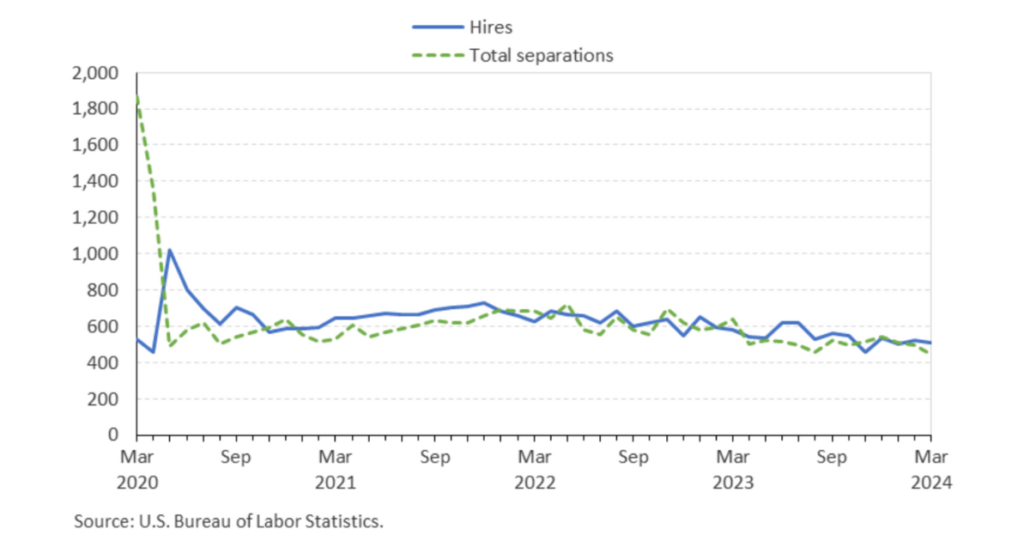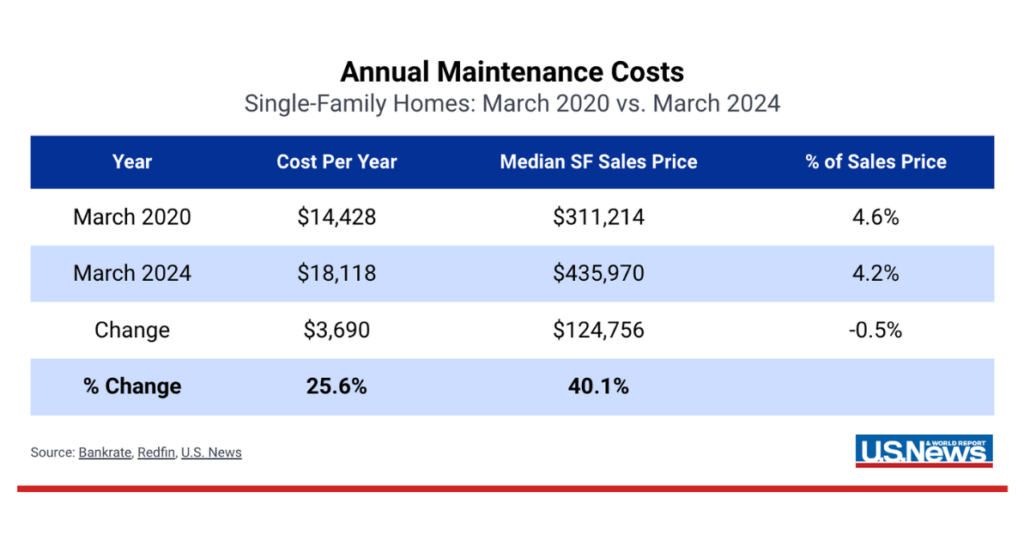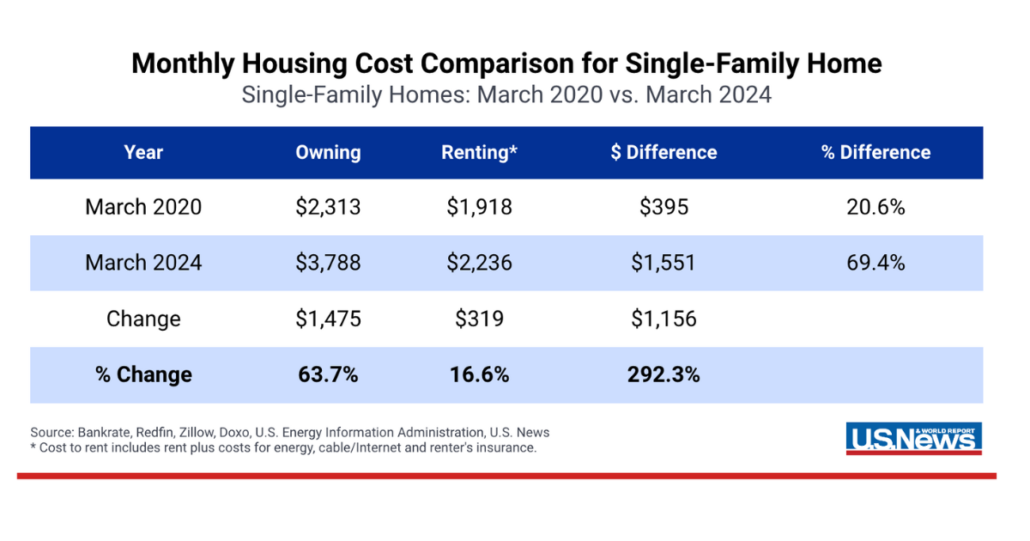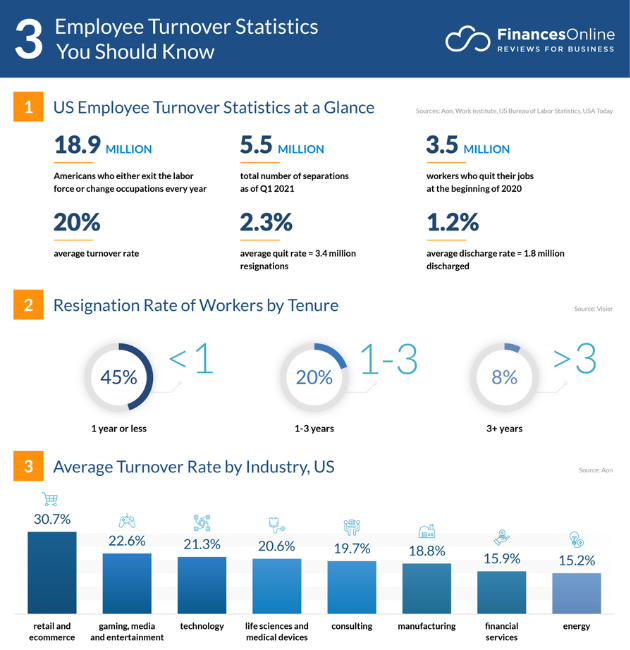Did you know that California, the land of innovation and opportunity, also faces one of the highest employee turnover rates in the nation?
California’s labor market is as vibrant as it is volatile. Known for its diverse industries, from cutting-edge technology hubs in Silicon Valley to the entertainment capital of Los Angeles, the state’s economic landscape attracts talent from around the globe. However, this dynamic environment also presents unique challenges when it comes to employee retention and turnover.
In this article, we delve into the factors driving these trends and explore effective strategies that can help companies not only keep their best employees but also thrive in a competitive job market.
In March, California had 507,000 hires and 442,000 separations, compared to 523,000 hires and 499,000 separations in February. Over the 12 months ending in March, hires have averaged 539,000 per month and separations have averaged 501,000 per month. These averages include workers who may have been hired and separated more than once during the year. (See Chart 1 below)
Chart 1: Hires and total separations in California, seasonally adjusted (in thousands)
Source: https://www.bls.gov/regions/west/news-release/jobopeningslaborturnover_california.htm
As reflected in the chart above, the labor market in California has stabilized following the disruptions of the COVID-19 pandemic. However, the ongoing balance between hires and separations highlights a persistent challenge: a high employee turnover rate. This steady turnover, where companies must continuously replace departing employees, presents significant obstacles for businesses, particularly in recruitment. The need to constantly attract and onboard new talent not only strains resources but also disrupts productivity and hampers long-term growth.
The implications of high turnover are far-reaching. For businesses, this means increased recruitment and training costs, disruptions in service delivery, and a loss of institutional knowledge. For the state’s economy, high turnover can lead to reduced productivity and slower economic growth. As turnover remains a critical issue, organizations must navigate the complexities of retaining top talent in an increasingly competitive environment.
California’s high employee turnover rate is not merely a statistic but a reflection of the complex and multifaceted challenges that businesses and employees face in the state. From the soaring cost of living to the relentless competition for top talent, several key factors contribute to this ongoing issue. Additionally, the pressures of a fast-paced work environment, combined with evolving employee expectations and stringent regulatory demands, create a volatile job market where turnover is both frequent and costly.
Key Takeaways
- California’s cost of living is among the highest in the US
- Living costs in the Golden State are around 30% higher than the national average, but this depends on where you live in the state.
- The state’s lack of affordable housing is one of the biggest drivers of price disparities.
Source: https://realestate.usnews.com/real-estate/articles/why-is-california-so-expensive
Tough BUT True!
- Employees face financial strain due to living costs being 30% higher than the national average, leading them to seek higher-paying jobs or relocate.
- The lack of affordable housing drives employees to spend a larger portion of their income on housing, increasing financial stress and prompting job searches in more affordable areas. Beyond higher mortgage rates and mortgage payments, a recent study by Bankrate showed that the maintenance costs for a typical single-family home – including repairs, property taxes, insurance, and utilities – rose by nearly 26% between March 2020 and March 2024 to over $18,000 per year.
- In March 2020, when the cost of owning a single-family home was about 21% more than renting a comparable home, the combination of tax advantages plus building equity likely made the math work for many new homeowners. By March 2024, however, with the cost of owning almost 70% higher than renting, it’s much more difficult to justify that extra expense.
Source: https://realestate.usnews.com/real-estate/articles/when-will-the-housing-market-crash
- High living costs contribute to job market fluidity, as employees frequently switch jobs for better compensation.
- Companies struggle to attract and retain talent due to high living costs, requiring higher salaries and benefits, which can be difficult for smaller businesses or startups.
Recruitment Realities: The Impact of High Employee Turnover
High employee turnover in California has led to a surge in demand for recruitment services, presenting both opportunities and challenges for the sector. Recruitment firms are under pressure to deliver quality candidates quickly, often necessitating the acceleration of traditional hiring processes. As companies struggle with turnover, recruiters are increasingly expected to offer more than just staffing solutions. They must also provide strategic insights into employee retention, making their role more complex and integral to long-term client success.
To manage turnover more flexibly, many organizations are turning to temporary or contract staffing, driving up demand for specialized recruitment services in these areas. However, the persistent need for talent in California’s competitive market has created challenges in talent acquisition, pushing recruiters to explore national or even international talent pools to meet client demands.
In this high-turnover environment, recruiters face the added pressure of negotiating competitive compensation packages to attract top talent, which can increase the overall cost of recruitment. Moreover, recruitment firms are playing a more significant role in helping companies build strong employer brands, essential for both attracting and retaining talent. This emphasis on employer branding requires a sustained and collaborative effort between recruiters and their clients, further highlighting the evolving and critical role of recruitment in California’s dynamic job market.
Image source: https://financesonline.com/employee-turnover-statistics/
Effective Strategies to Navigate High Turnover
In California’s competitive job market, high employee turnover has become a significant challenge for both businesses and recruitment firms. The constant churn of talent not only strains organizational resources but also places immense pressure on recruiters to quickly fill vacancies with top-quality candidates. As turnover rates continue to rise, the recruitment sector must adapt by adopting innovative strategies to manage these challenges effectively.
1. Leverage Technology for Efficiency: To enhance recruitment efficiency, companies should embrace advanced technologies like AI-driven candidate matching, automated screening tools, and data analytics. AI-driven candidate matching utilizes sophisticated algorithms to analyze resumes and job descriptions, ensuring that the most suitable candidates are identified quickly. Automated screening tools further streamline the process by handling repetitive tasks such as initial resume reviews and pre-screening questions, which significantly reduces the time spent on manual sorting. This automation not only accelerates the recruitment cycle but also minimizes human error, leading to more accurate candidate evaluations.
In addition to AI and automation, data analytics plays a crucial role in refining recruitment strategies. By analyzing metrics such as time-to-fill, cost-per-hire, and candidate sources, HR professionals can gain valuable insights into the effectiveness of their hiring processes. This data-driven approach allows for continuous improvement by identifying bottlenecks and optimizing recruitment strategies.
Recruiting new employees is not cheap. According to new benchmarking data from the Society for Human Resource Management (SHRM), the average cost per hire was nearly $4,700.
Source: https://www.shrm.org/topics-tools/news/talent-acquisition/real-costs-recruitment
2. Expand Talent Pools: To enhance the recruitment process and overcome local talent shortages, companies should broaden their search by exploring national and international talent pools. By leveraging virtual recruitment strategies, such as remote interviewing and online onboarding, organizations can access a wider array of candidates beyond their immediate geographic area. This approach allows companies to tap into diverse skill sets and perspectives, enriching their talent base and increasing the chances of finding the ideal fit for various roles. Virtual recruitment also mitigates the constraints of geographic limitations, enabling companies to attract top talent from across the globe.
By adopting a global recruitment strategy, it can help alleviate challenges in tight labor markets. When local talent is scarce or highly competitive, looking beyond the immediate area provides alternative solutions to meet hiring needs. This expanded reach not only helps in sourcing candidates with specialized skills that may not be available locally but also fosters a more inclusive and diverse workplace. By embracing virtual recruitment methods and focusing on a broader talent search, companies can improve their chances of securing the best candidates and building a more dynamic and resilient workforce.
3. Focus on Retention: Implementing retention strategies that extend beyond the initial hire is crucial for maintaining a stable workforce. Employee engagement plays a significant role in this, as engaged employees are more likely to remain with the company, reducing the costly process of turnover. By prioritizing best practices for employee engagement, work-life balance, and career development opportunities, you not only enhance job satisfaction but also address the specific needs and concerns of your workforce. Developing tailored retention plans that focus on these areas will significantly decrease the likelihood of resignations and foster long-term commitment to your organization.
Career development is crucial for retaining employees. According to a LinkedIn Learning Report, 94% of individuals would remain with companies that invest in their professional growth. Source: https://www.linkedin.com/pulse/how-career-development-contributes-employee-retention-felipe-negron/
4. Offer Flexible Staffing Solutions and Flexible Work Arrangements:
Companies should provide employees with flexible staffing options, such as temporary, contract-to-hire, and freelance placements. These options allow companies to adjust their workforce according to changing needs, reducing the strain on permanent staff and helping them manage high turnover periods more effectively.
Employees today prioritize flexibility more than ever before. According to research by McKinsey and Company shows that hybrid work is here to stay. Office attendance is still 30 percent lower than it was before the pandemic. To adapt, companies should move away from a one-size-fits-all approach and focus on results, empowering employees to choose how they work best, whether remotely, in-office, or in a hybrid setup.
5. Invest in Recruiter Training and Development: Continuously train recruiters on the latest industry trends, technologies, and best practices. Equip them with the skills to manage the complexities of high turnover environments, including negotiation, candidate relationship management, and strategic advising. Well-trained recruiters are better positioned to handle the pressures of high turnover and deliver successful outcomes.
Employee training and development can help employees become better at their jobs and overcome performance gaps that are based on lack of knowledge or skills. This can help organizations and teams be more productive and obtain improved business outcomes, leading to a competitive advantage over other companies.
Source: https://www.td.org/talent-development-glossary-terms/what-is-employee-training-and-development
Let’s Connect!
High employee turnover in California presents a formidable challenge for companies striving to build a stable workforce. Despite the complexity of this issue, it is not unmanageable. By deeply understanding the root causes of turnover and implementing targeted, data-driven retention strategies, businesses can transform their approach to recruitment and staff management. Investing in strategic employer branding, competitive compensation, and a supportive work culture are critical steps in reducing turnover rates.
As companies navigate the complexities of high employee turnover and recruitment challenges in California, having a reliable partner can make all the difference. At Link Compliance, we specialize in providing comprehensive recruitment solutions tailored to address these specific challenges. Our services include strategic employer branding, competitive compensation benchmarking, and targeted talent acquisition strategies designed to reduce turnover and build a resilient workforce.
With our expertise and dedication, we help businesses not only attract top talent but also retain it, ensuring long-term success in a competitive market. Connect with us to discover how Link Compliance can support your recruitment needs and drive your organization’s growth.
–
Singapore | Malaysia | China | Indonesia | Taiwan | USA | Vietnam | Japan | Hong Kong | Germany | Turkey | Philippines








